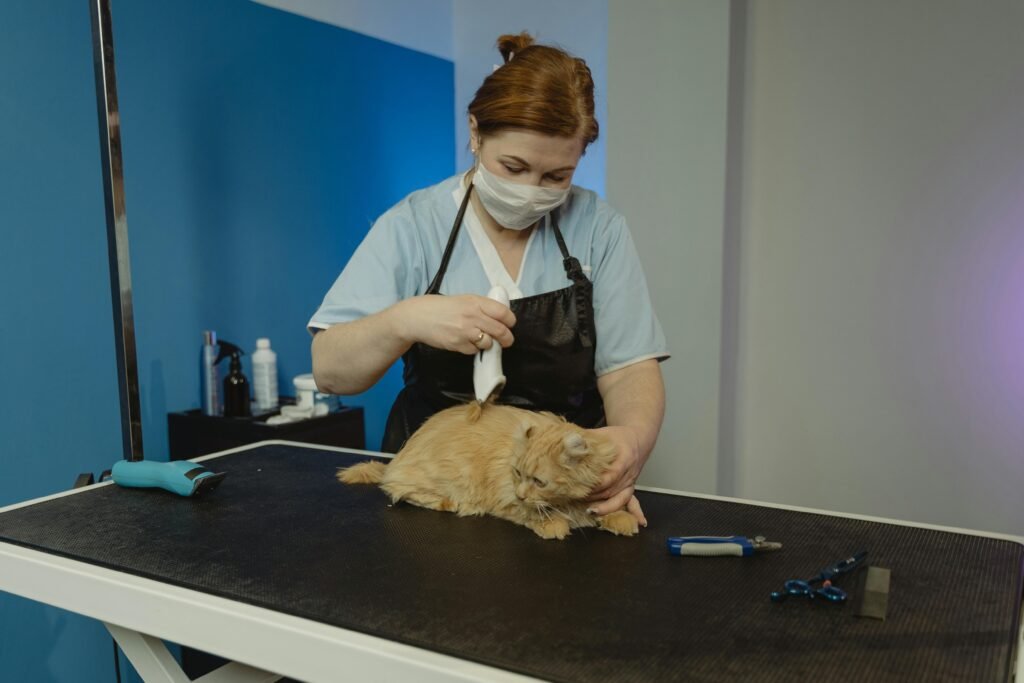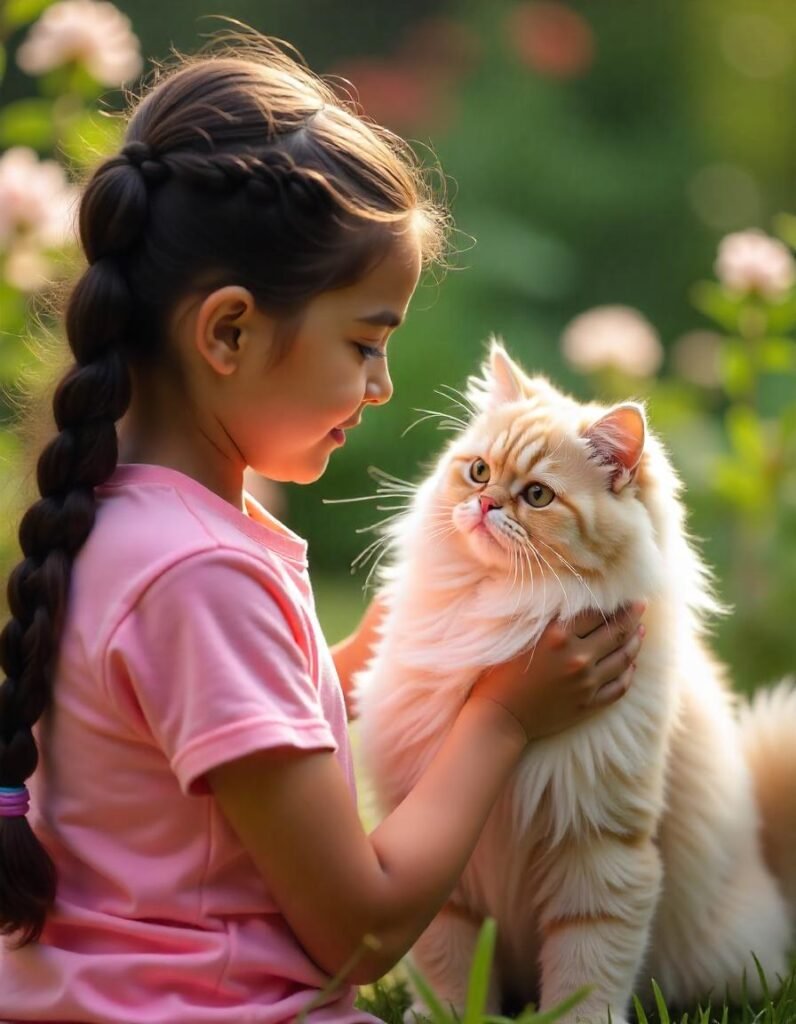How to Keep Your Feline Healthy and Happy
Taking proper care of your cat is essential for its well-being and longevity. Whether you’re a first-time cat owner or an experienced feline lover, understanding the basic needs of your cat is key. In this guide, we’ll cover the most important aspects of cat care to help your furry friend thrive.

Balanced Nutrition
Ensuring your cat maintains a nutritional balance is pivotal for their overall health and well-being. A balanced diet plays a critical role in supporting their immune system, enhancing energy levels, and ensuring healthy skin and fur. Cats have specific dietary requirements that differ significantly from dogs and humans, hence it is essential to provide them with the appropriate nutrients.
A healthy cat starts with a balanced diet. Provide high-quality commercial cat food appropriate for your cat’s age, weight, and health condition. Always ensure fresh water is available.
A well-rounded diet for cats typically includes proteins, fats, vitamins, minerals, and water. Proteins, primarily derived from meat, provide essential amino acids necessary for muscle growth and repair. Fats serve not only as a source of energy but also assist in the absorption of fat-soluble vitamins. Additionally, vitamins and minerals support various bodily functions, including bone health and immune response.
To ensure your cat receives a nutritionally balanced diet, opt for high-quality commercial cat foods that meet the standards set by the Association of American Feed Control Officials (AAFCO). These products are formulated to provide all essential nutrients cats require. It is also beneficial to consult with a veterinarian to devise a tailored feeding plan that suits your cat’s specific age, weight, and health needs.
In summary, a nutritional balance for cats is foundational for their health. By incorporating the right proportions of protein, fats, vitamins, and minerals, cat owners can significantly improve their pets’ quality of life. Regular vet checkups and adjustments to diet will ensure that your feline friend remains healthy and happy.
For more information on your cat’s nutrition, Click here
Regular Veterinary Visits
Schedule regular vet check-ups for vaccinations, dental care, and health screenings. Early detection of issues like obesity, kidney disease, or diabetes can significantly improve your cat’s quality of life. Regular veterinary visits play a critical role in maintaining the health and well-being of your cat. Just like any other pet, cats require routine check-ups to ensure they are healthy and disease-free. These visits allow veterinarians to monitor your cat’s health, detect any potential issues early, and provide necessary vaccinations and treatments.
One of the primary benefits of regular veterinary visits is preventive care. These check-ups often include vaccinations that protect against common feline diseases, such as feline leukemia and rabies. Furthermore, veterinarians can provide guidance on nutrition, dental care, and overall behavioral health during these visits, ensuring your cat leads a long, thriving life.
How Often Should You Visit the Veterinarian?
As a general guideline, it is recommended that cats see a veterinarian at least once a year for a wellness exam. However, older cats or those with pre-existing medical conditions may require more frequent visits. It is essential to follow your veterinarian’s advice on how often you should schedule these appointments based on your cat’s health status and age.
In conclusion, regular veterinary visits are fundamental in providing your cat with the care it needs. By prioritizing these check-ups, you not only ensure that your beloved companion remains healthy but also receive valuable information and resources to enhance its quality of life.

Grooming and Hygiene
Grooming is a key aspect of cat care. Brush your cat regularly to reduce shedding and prevent hairballs, especially for long-haired breeds. Trim their nails carefully, and provide scratching posts to maintain claw health and avoid furniture damage. Cat grooming is an essential aspect of pet care that ensures your feline friend remains healthy and happy. Regular grooming helps prevent matting, reduces shedding, and minimizes the risk of skin issues. Moreover, it promotes a strong bond between the cat and its owner, making the grooming process enjoyable for both.
There are various grooming techniques tailored to different cat breeds. Long-haired cats may require daily brushing to prevent knots, while short-haired breeds can typically be groomed once a week. Utilize high-quality brushes designed specifically for cats, as they ensure effective removal of loose hair without hurting the skin. Bathing cats is generally discouraged, but if necessary, use a gentle cat shampoo to maintain their hygiene.
Maintaining Your Cat’s Hygiene
In addition to grooming, maintaining hygiene involves regular dental care and tidying the litter box. Dental health is crucial, as tartar buildup can lead to serious health issues. Consider incorporating dental treats or brushing their teeth to ensure optimal oral hygiene. Furthermore, keep an eye on the litter box; cleanliness reduces the likelihood of behavioral issues and keeps your cat healthy. Regular upkeep of your pet’s environment plays a crucial role in their overall well-being.

Safe and Comfortable Environment
Ensure your home is a safe space for your cat. Keep toxic plants, chemicals, and dangerous objects out of reach. Create cozy resting areas and hideaways where your cat can relax. Providing exceptional cat care begins with ensuring your feline friend has a safe and comfortable environment. Cats are sensitive creatures, and their well-being is directly linked to the space around them. A thorough understanding of their needs allows you to create an inviting atmosphere that promotes health and happiness.
Firstly, it’s essential to assess potential hazards in your home. Cats are curious by nature, and thus, securing areas that might pose risks is critical. Keep household chemicals, sharp objects, and toxic plants out of reach. Creating safe spaces for your cat also involves providing them with places to hide and explore, such as cat trees, cozy nooks, and enclosed areas where they can feel secure.
In addition to safety, comfort plays a pivotal role in cat care. Ensure your home is equipped with soft bedding, temperature control, and access to fresh water and food. Cats appreciate being able to control their surroundings, so providing options for cozy resting spots will encourage relaxation. Moreover, engaging them with toys and climbing structures can enhance their living environment, making it both stimulating and comfortable.
Ultimately, a well-thought-out home for your cat, paired with consistent attention to their needs, ensures they lead a happy, healthy life. By taking the necessary steps to create a safe and comfortable environment, you lay the foundation for a loving and fulfilling companionship with your feline friend.
Enrichment and Exercise
Cats need mental and physical stimulation. Provide toys, climbing trees, and interactive play sessions to prevent boredom and encourage healthy activity. A stimulated cat is a happy cat. Ensuring your feline friend remains stimulated is crucial for their well-being. Cat enrichment refers to activities that promote instinctive behaviors, providing mental and physical challenges. This not only prevents boredom but also enhances your cat’s quality of life.
Physical exercise is vital for a cat’s overall health. Regular activity helps maintain a healthy weight, reduces the risk of obesity, and can mitigate problems like anxiety or stress. Engaging them in active play also fosters stronger bonds between pet and owner, creating a fulfilling companionship.
Creative Ways to Encourage Activity
There are numerous effective ways to encourage exercise in cats. Interactive toys, such as feather wands or laser pointers, can stimulate their hunting instincts, prompting them to leap and pounce. Additionally, creating a dynamic environment with climbing structures or scratching posts encourages exploration and exercise.
Consider incorporating treat-dispensing puzzles, as they combine mental stimulation with physical effort, making activities both rewarding and fun. Furthermore, rotating toys can keep the environment fresh, preventing your cat from losing interest.
Lastly, remember to provide safe outdoor access, such as a secured catio, to enhance their exploration opportunities. The combination of indoor activities with safe outdoor experiences leads to a happy, well-adjusted cat.
Litter Box Maintenance
Keep the litter box clean and in a quiet, accessible location. Scoop daily and change the litter regularly to prevent odors and urinary issues. Maintaining a clean litter box is an essential aspect of cat care. Cats are known for their cleanliness, and a poorly maintained litter box can lead to behavioral issues, such as reluctance to use the box, which in turn can cause problems like litter box avoidance or even inappropriate elimination. Ensuring your feline friend has a hygienic place to relieve themselves is vital for their health and happiness.
Steps for Effective Litter Box Maintenance
To keep your cat’s litter box in optimal condition, regular maintenance is essential. First, scoop the litter box daily to remove any clumps or waste. This simple practice helps keep odors at bay and encourages your cat to use the box consistently. Secondly, it is advisable to fully clean the litter box at least once a week. This involves dumping the old litter, scrubbing the box with mild soap and water, and replacing it with fresh litter. Remember to choose a litter type your cat prefers, as this can significantly affect their willingness to use the box.
Common Mistakes to Avoid
While maintaining a litter box seems straightforward, several common mistakes can undermine effective cat care. One frequent error is using scented litters, which might deter some cats due to sensitivities. Additionally, if you have multiple cats, it is best to have one litter box per cat plus one extra, as overcrowding can lead to territorial disputes and litter box aversion. Lastly, avoid placing the litter box in high-traffic or noisy areas; cats prefer a quiet and private space for their needs.
